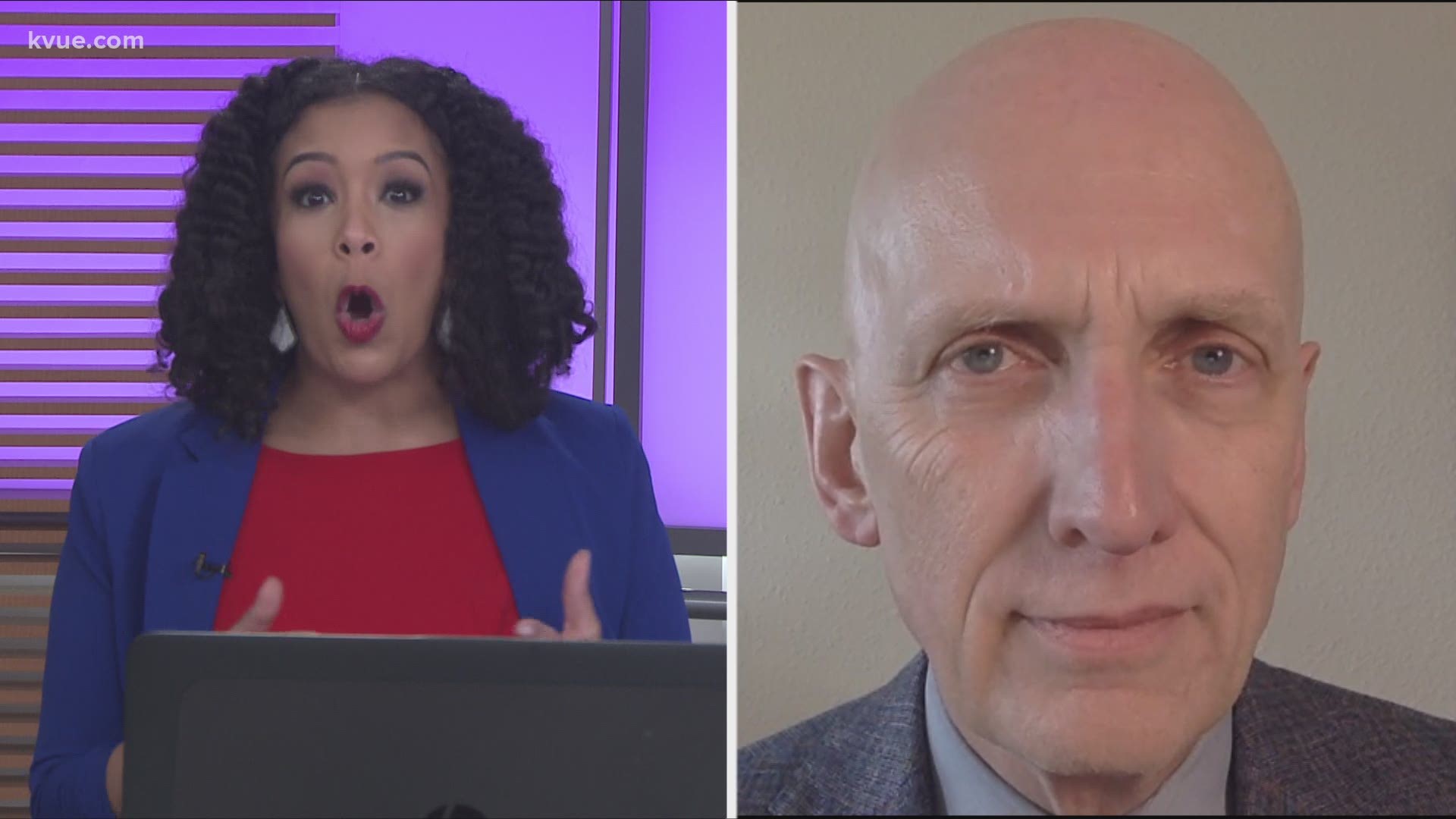AUSTIN, Texas — With the rise COVID-19 cases and hospitalizations, we want to get answers and information from medical experts.
Senior Vice President and Dean of Clinical Affairs at the Baylor College of Medicine Dr. James McDermott joined KVUE to discuss the coronavirus.
Here is a look at the Q&A with McDermott:
Question: A lot of people hoped that the hot summer months would have slowed down the spread of COVID-19, but that just does not seem to be the case. Does it?
Answer: I think that's one of the few questions we've answered definitively. The heat is not going to rescue us from COVID-19, unfortunately.
Question: We're seeing a huge surge in cases, particularly right here in Travis County and staffing levels at Texas hospitals are a concern for many. Talk to us about how things look overall.
Answer: Yes. So we've been dealing like you have since April, really with the global pandemic. We thought we had a surge in April. That looks quaint by comparison. When you look at the burden on hospitals today in Houston and surrounding counties, levels are four to five times what we saw in last April. But we're doing OK. And there's some positives in that in the death rate has come down substantially and the outcome of patients in hospitals has improved substantially as well.
Question: Now, I want to ask you about that death rate because we've heard ... at first we'll see cases surge, then we'll see hospitalization surge. And then it takes a few weeks before we'll see those death numbers catch up. Do you think we are set to see a surge in the number of people dying from this virus later? Or do you think because of treatment now and that we're learning more .... that those can be avoided?
Answer: Yes. So it's this sort of a good news, bad news story, but it's mostly good news, frankly. When this started back April and May, our mortality rate for hospitalized patients with COVID-19 was about 16%. It's about half of that now, which is substantial improvement. So that's great. But it's just not the mortality rate. Length of stay has decreased from 18 days to about five days – dramatic improvement for length of stay. Your chance of going on a ventilator if you come into a hospital with COVID-19 in April and May was about 44%. Now it's about 14% – dramatic improvement in and the ability to stay off the ventilator. So that's all good. The bad news is we are seeing in the community four to five times as many people as we did before with COVID-19. And just like car accidents, if we have four or five times more people driving, we're going to see four to five times more people with car accidents. So unfortunately, we are going to see a number of deaths as this wave kind of washes through our health system.
Question: You gave us some really, you know, encouraging numbers there about the ability to treat this virus. So what have you all found is starting to work?
Answer: I think it's a combination of things. Partially, this is the worst thing: a lot younger population. When you look at our emergency department, fully 25% of COVID-19 patients coming into our ED are in their 20s. So it appears that older people have got the message that masking social distancing is important and works and younger people maybe a little less so. I think that's part of it. I think part of it is therapeutics: Remdesivir antiviral agent, the use of convalescent sera to treat patient, giving antibodies to treat the disease ... steroids. So there are a lot of treatments now that we have that actually have a positive impact. And I think we've just got better at taking care of patients with practice. There are things like proning patients – putting them face down on the bed on a ventilator is not easy. It is not natural, but it helps. So we've got better in developing processes to take care of patients with COVID-19.
Question: You know, in those hospitals and the doctors' offices ... how is the PPE? Because we've been hearing that all over the country they're starting to see shortages again.
Answer: That's a really good point. So, again, April and we thought we were seeing a surge. There was a lot of anxiety in the part of health care providers that we would run out of PPE and we wouldn't be safe and our families wouldn't be safe. That's not a concern now. We have adequate PPE. We've got good supply chain. We've got a good run rate established. We recycle some of our PPE to preserve it. But I don't think anybody's concerned now that we're going to run out of PPE, which is a real blessing compared to where we were three or four months ago.
MORE CORONAVIRUS COVERAGE:
- Round Rock, Austin ISD among local districts suspending first three weeks of in-person classes
- LIST: Confirmed Central Texas coronavirus cases by county
- Travis County health authority says opening schools could potentially lead to more than 1,300 student deaths
- MAP: COVID-19 testing locations in the Austin area
- Round Rock ISD discusses preliminary plan for upcoming school year
- The other COVID-19 problem: Stress and anxiety are on the rise, data shows
- Texas nurses urge schools to include school nurses in COVID-19 planning

